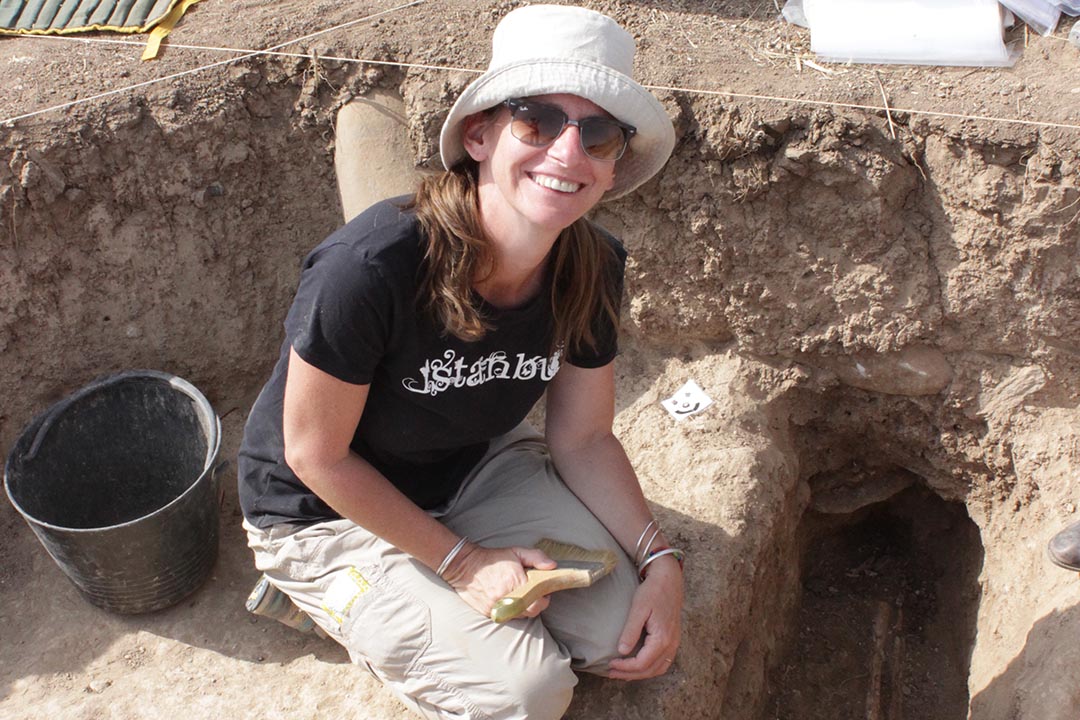
Teeth from royal cattle herds of Mesopotamia shed light on ancient urban cultures: USask research
Newly published cutting-edge research led by University of Saskatchewan’s (USask) Near Eastern archaeologist Dr. Tina Greenfield (PhD) reveals how domesticated livestock were managed in one of the world’s earliest cities.
The findings, published in the journal PLOS ONE, (see article) also provide a glimpse into how the Sumerian peoples of ancient Mesopotamia were fed, traversed the landscape, and interacted with each other.
Mesopotamia, the region bordered by the Tigris and Euphrates Rivers, is known as the “Cradle of Civilization.” The early Mesopotamians employed complex systems of land use and irrigation to feed a dramatically growing population, and reared cattle, sheep, goats, donkeys, and other animals for food, milk, manure, and transportation.
“It is always interesting to see how people living in one of the world’s earliest cities managed their animals, both during their lives and in their death,” said Greenfield, principal investigator of the “Mobile Economies” research project and adjunct professor in USask’s College of Arts and Science Department of Archaeology and Anthropology.
The cattle were slaughtered and buried as part of the funerary rituals at the famous royal graves in Ur, one of the world’s earliest cities. The royal graves, located in today’s southern Iraq, date back nearly 5,000 years to the Early Dynastic period (2900-2350 BCE).
“We had the chance to see if the kings and queens from the Sumerian culture had their own royal herds that fed them and also came with them in their afterlife, or if their animals came from the same herds that fed the rest of the population,” Greenfield said.
The royal sites contained entire skeletons of the highly valuable cattle that were killed in their prime—an “astronomical” show of wealth and conspicuous consumption. But the research shows that royal cattle were not managed significantly different from those found at Ur’s private/non-royal burial sites.
Greenfield’s team, which includes researchers from USask, University of Cambridge, University College London, and the University of Pennsylvania, gleaned the information by analyzing bones and teeth specimens from cattle sacrificed as grave goods for stable isotopes (strontium, oxygen, and carbon).
The analyses of isotope elements retained in animal teeth from plants, soil and water provided insights on the locations where the animals ate and drank, and where they migrated from or were herded. The data showed most animals were likely herded close to Ur, but at least one of the oxen had come a long distance to Ur.
“We haven’t done anything like this with cutting-edge archeological sciences in Mesopotamia previously,” Greenfield said.
She called the use of such high-end analytical technique “revolutionary,” as it extracts huge quantities of otherwise unavailable information while minimizing damage to archaeological material.
The researchers now have new information about Mesopotamia’s economy, people, their health, and diet during a period of massive urbanization and trade expansion, and cities and city states emerging across the Near East, said Greenfield.
The samples used in the study came from Sir Leonard Woolley’s excavations at Ur in the 1920s. The animal remains were lost in the bowels of the British Museum till the 2010s, and Greenfield received permission to analyze them in 2014.
This study is part of a larger project she is conducting at early cities across southern Iraq. Her goal is to learn how livestock were managed, how humans and animals moved across the territory—elements essential to better understand the nature of the economy of the world’s earliest cities and a pattern that underlies even modern Canadian cities.
The research is funded by the Social Sciences Research Council of Canada; The Newton Trust Research Grant (University of Cambridge); Cambridge Humanities Research Grant Scheme; and the University of Pennsylvania Museum of Archeology and Anthropology.
